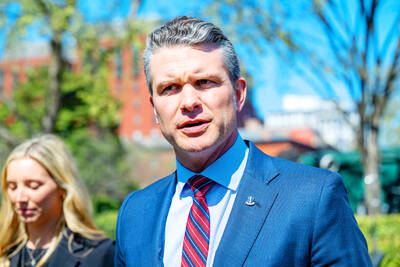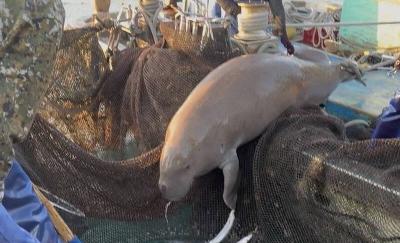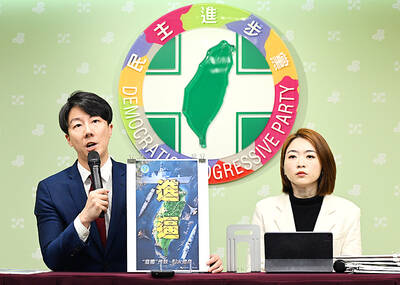Badly thought out waste management policies, outlined in a petition against a planned incinerator by Miaoli County (苗栗) residents and handed in to the Environmental Protection Administration (EPA) last week, are driving people to new levels of social activism.
Last Friday, about 300 Miaoli residents, accompanied by legislators and county councilors, delivered a petition to EPA Administrator Hau Lung-bin (郝龍斌), that expressed their opposition to a planned waste incinerator in Chunan (竹南) township.
In the petition letter, protesters said the chosen site for the incinerator is inappropriate due to its proximity to potentially inundated areas of the Chungkang River (中港溪) and to the seismically-active Touhuanping Fault (斗煥坪斷層).
Activists contend that the local government is risking the lives of residents because the incinerator would be built on a 5m-high base, making people in low-lying areas adjacent to the site more vulnerable to flooding.
Residents also questioned the necessity of the incinerator, which is designed to burn 500 tonnes of waste per day.
Based on Chunan Anti-incinerator Self-help Association's estimates, the 500 tonnes of daily waste now produced by county residents will decrease to about 300 tonnes after waste recycling, the collection of food leftovers and limits on plastic shopping bags are more fully instituted.
Lin Wen-bing (林文炳), executive-secretary of the association, said that transferring the waste to incinerators in Taichung and Hsinchu that now run below capacity would be a better solution than the construction of yet another incinerator.
In addition, association chief Lai Jing-jung (賴金榮) pointed out that the local government invited public bids for the construction of the incinerator without receiving the required agreement of representatives from the county's 18 townships.
Far from the vocal support they were seeking, what residents heard from EPA head Hau last Friday was a promise to press local government officials to reconsider their position and review procedures for inviting bids.
The frustrated residents then turned to the Miaoli County Government, expressing their opposition by displaying banners and handing the petition to county officials.
"If the government delivers a bid without communicating with residents first, we will file a lawsuit against officials involved with administrative neglect," Lai said.
In addition, protestors said it was ironic that the county government plans to demand that its 18 township offices accept the byproducts of the incinerator -- bottom ash and toxic fly ash.
Huang Hung-chang (
"Building the incinerator is essential to solving the looming garbage crisis," Huang said, "And we still have plans to build a final repository for bottom ash and fly ash."
Chen Jian-zhi (陳建志), director of the waste policy committee of the Green Citizens' Action Alliance, told the Taipei Times that the Chunan incinerator was just one of Taiwan's many ill-considered waste-management policies.
Based on the alliance's vast experience in this area, Chen said that residents, regardless of location, generally oppose incinerators for the same reasons, including: lack of waste to burn, ill-advised site selection, the poor management of bottom ash and fly ash and a questionable decision-making process.
In addition, Chen sid that local governments carrying out build-operate-transfer (BOT) or build-operate-own (BOO) incinerator projects all face a common dillema -- no place to dump the by-products of waste incineration.
"When the Miaoli County government demands 18 township offices take the residue back, it is actually shirking its responsibility," Chen said.
Many cases involving the illegal dumping of bottom ash and fly ash, Chen said, could be attributed to the lack of qualified final repositories. According to Chen, Tungshih (東勢) township in Taichung County dumps the hazardous waste on the riverbed of the Tachia River (大甲溪).
Chen said, however, that the dilemma could be attributed the EPA's failure to expeditiously establish policies to deal with the large amount of bottom ash and fly ash being produced by the nation's incinerators.
After all, on the basis of EPA's original estimates in during the 1990s, Taiwan's 36 incinerators would have been capable of burning 30,400 tons of municipal solid waste per day by the end of next year.
Environmentalists say they regret the fact that the nation's waste management policy hasn't followed changes in Taiwanese society. The unexpected success of waste recycling programs, for example, has led to a fact that there isn't enough garbage to burn in the existing incinerators.
In March, the EPA announced that four BOO/BOT incinerator projects would be abandoned due to pressure from local residents. Although the change in policy cuts the total capacity for treating waste by 3,250 tons per day, activists said, strategies that are in accord with social changes should be ongoing.
Activists said that last year, Taiwan generated only 20,000 tons of household waste per day. Even with this, all operating and planned incinerators leave 7,150 tons of unused capacity, which often results in the illegal burning of hazardous industrial waste.
By observing the flourishing community-based anti-incinerator movement, some of the more aggressive elements of the movement now believe they have the political strength to push for a more thorough revision of Taiwan's waste management policies.
"Even thought local differences do exist, the hope of stopping the construction of unnecessary incinerators is the same," Chen said. "The integration of anti-incinerator groups will force the government to review its out-of-date waste management policies.
Chen said that anti-incinerator groups in southern Taiwan had built a network to support one another and that the network was expanding into the rest of the country.
George Cheng (
By working with the US-based Global Anti-Incinerator Alliance, an international alliance of individuals, academics, non-governmental organizationsand others working to end waste incineration, Taiwan Watch offers many local anti-incinerator groups updated information and strategies.
"What we want is to highlight that the problems caused by incinerators are global and deserve more attention," Cheng said.
Next month, Taiwan Watch will issue a report on Taiwan's anti-incinerator movement at an environmental forum held in Tokyo and exchange opinions with their counterparts in Japan, a country regarded by others as incinerator-friendly.

‘DENIAL DEFENSE’: The US would increase its military presence with uncrewed ships, and submarines, while boosting defense in the Indo-Pacific, a Pete Hegseth memo said The US is reorienting its military strategy to focus primarily on deterring a potential Chinese invasion of Taiwan, a memo signed by US Secretary of Defense Pete Hegseth showed. The memo also called on Taiwan to increase its defense spending. The document, known as the “Interim National Defense Strategic Guidance,” was distributed this month and detailed the national defense plans of US President Donald Trump’s administration, an article in the Washington Post said on Saturday. It outlines how the US can prepare for a potential war with China and defend itself from threats in the “near abroad,” including Greenland and the Panama

A wild live dugong was found in Taiwan for the first time in 88 years, after it was accidentally caught by a fisher’s net on Tuesday in Yilan County’s Fenniaolin (粉鳥林). This is the first sighting of the species in Taiwan since 1937, having already been considered “extinct” in the country and considered as “vulnerable” by the International Union for Conservation of Nature. A fisher surnamed Chen (陳) went to Fenniaolin to collect the fish in his netting, but instead caught a 3m long, 500kg dugong. The fisher released the animal back into the wild, not realizing it was an endangered species at

The High Prosecutors’ Office yesterday withdrew an appeal against the acquittal of a former bank manager 22 years after his death, marking Taiwan’s first instance of prosecutors rendering posthumous justice to a wrongfully convicted defendant. Chu Ching-en (諸慶恩) — formerly a manager at the Taipei branch of BNP Paribas — was in 1999 accused by Weng Mao-chung (翁茂鍾), then-president of Chia Her Industrial Co, of forging a request for a fixed deposit of US$10 million by I-Hwa Industrial Co, a subsidiary of Chia Her, which was used as collateral. Chu was ruled not guilty in the first trial, but was found guilty

The Chinese Nationalist Party (KMT) is maintaining close ties with Beijing, the Democratic Progressive Party (DPP) said yesterday, hours after a new round of Chinese military drills in the Taiwan Strait began. Political parties in a democracy have a responsibility to be loyal to the nation and defend its sovereignty, DPP spokesman Justin Wu (吳崢) told a news conference in Taipei. His comments came hours after Beijing announced via Chinese state media that the Chinese People’s Liberation Army’s Eastern Theater Command was holding large-scale drills simulating a multi-pronged attack on Taiwan. Contrary to the KMT’s claims that it is staunchly anti-communist, KMT Deputy